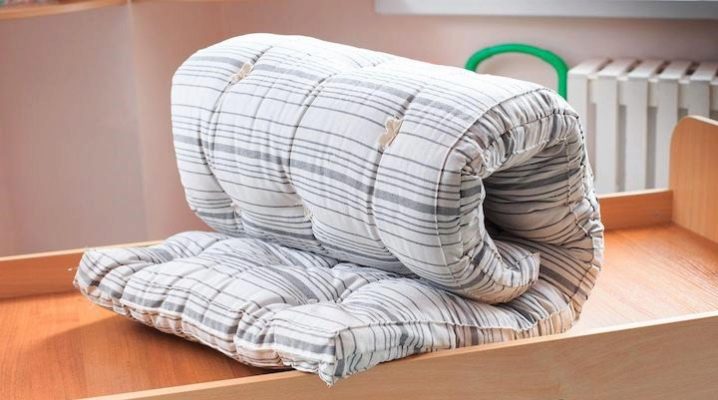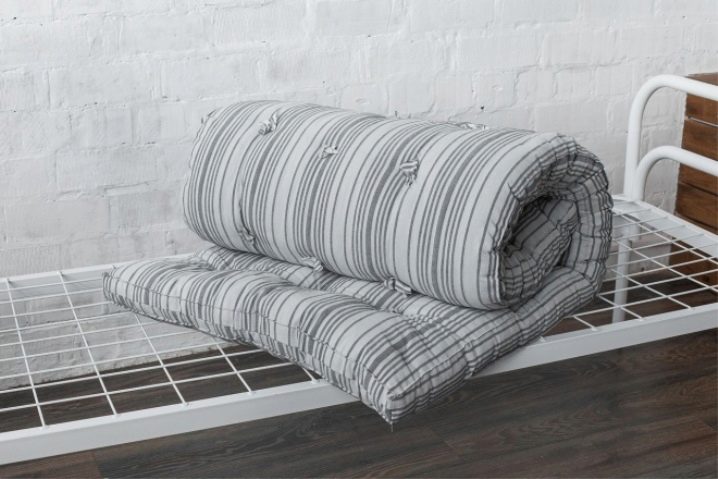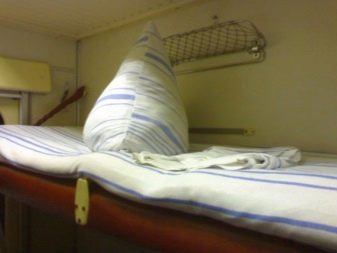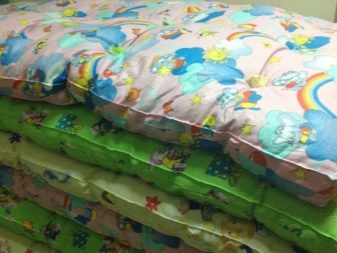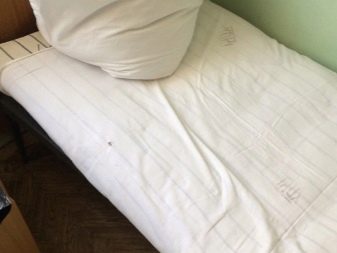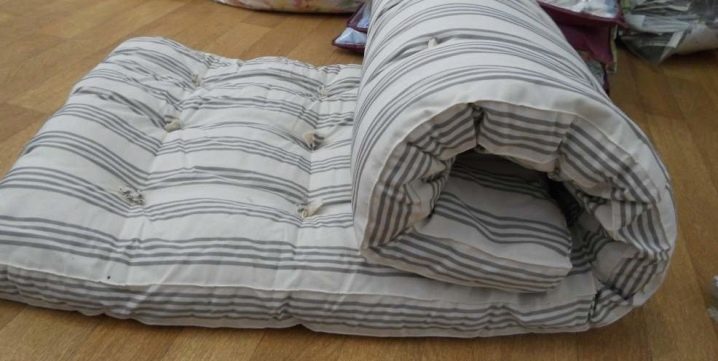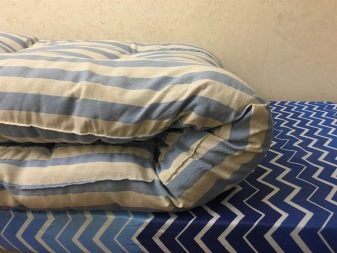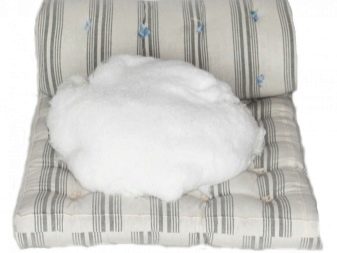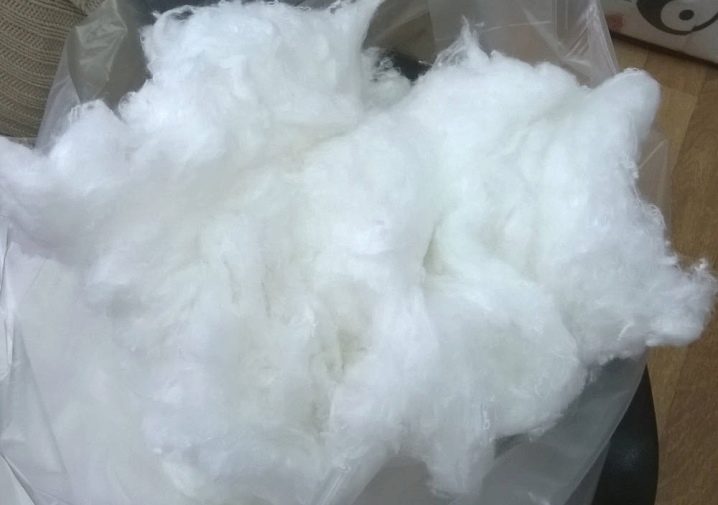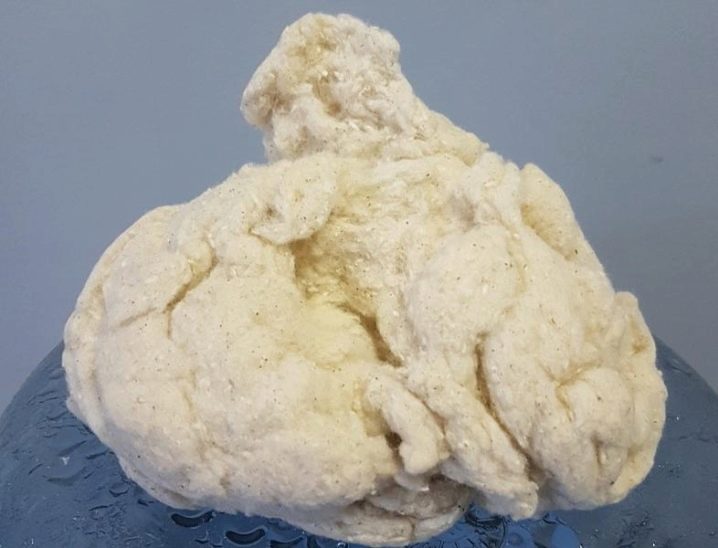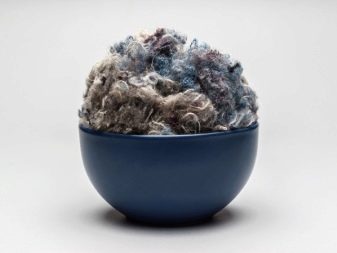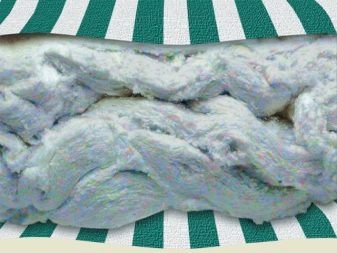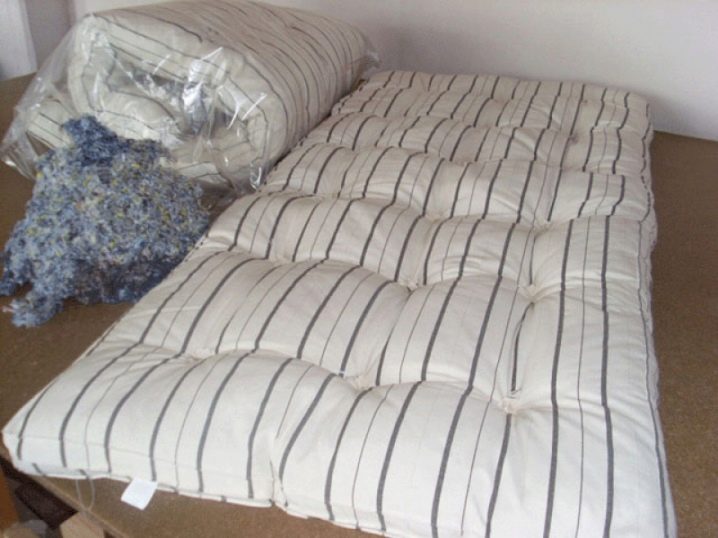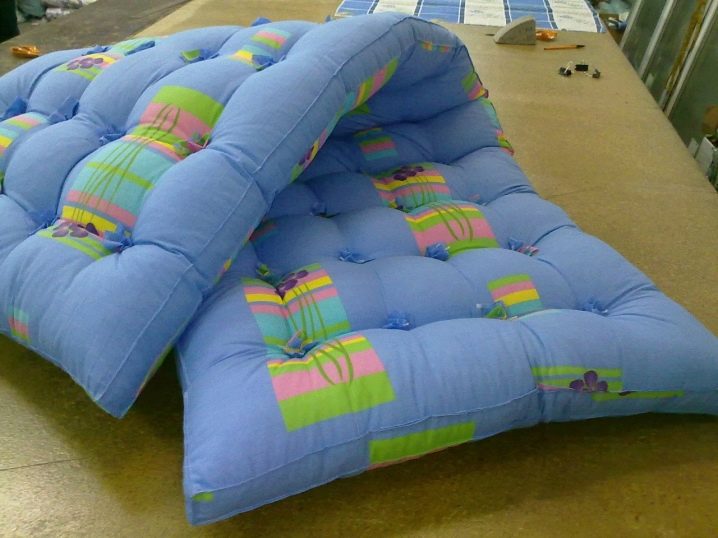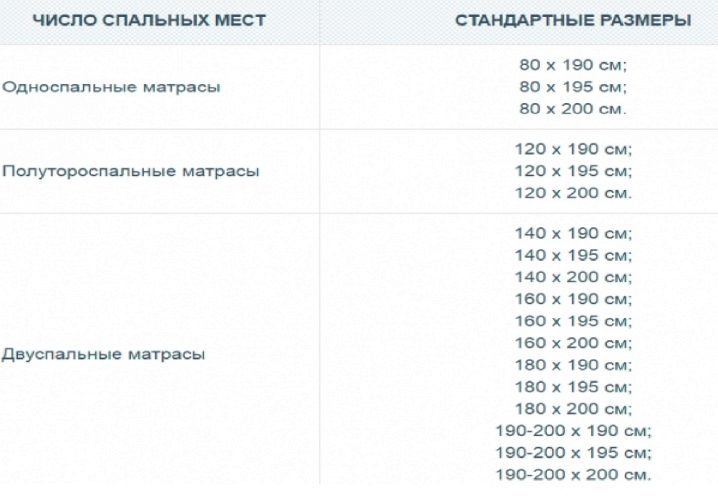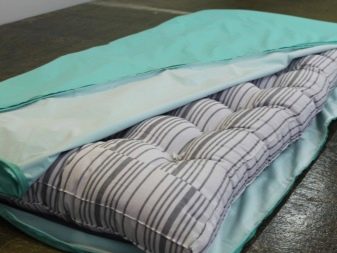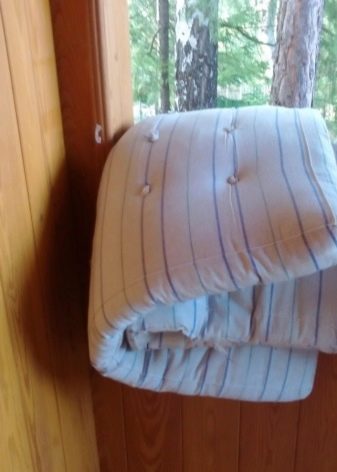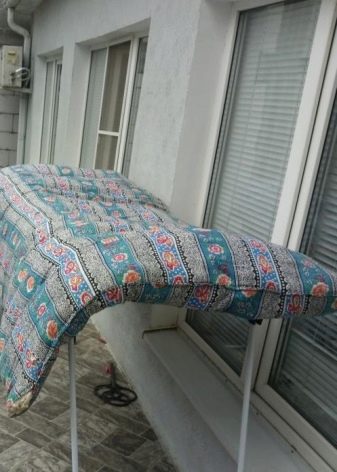Features of wadded mattresses and the rules for their selection
Wadded mattresses were especially popular in the USSR. With the development of technology, improved sleep equipment has appeared, which is why cotton-based products have become less in demand. Such models are distinguished by a budget price, thanks to which, even today, they find their buyer. Many manufacturers of mattresses are engaged in the manufacture of wadded models with different types of fillers. Let's figure out how to choose a quality product that will provide its owner with a healthy and sound sleep.
Advantages and disadvantages
In large factories, cotton mattresses are manufactured on fully automated lines. Works can also be semi-automatic - they involve the partial involvement of manual labor. According to the current GOST 19917-2014, such products are classified as sitting and lying accessories. There are no specific requirements for the quality of mattresses by this GOST. Today, in the manufacture of such products, manufacturers rely on TU 858-5758-2005.
Due to their low cost, mattresses based on cotton wool are purchased for beds in military units, for hospital beds, and kindergartens. They are often ordered for train passengers, for country beds.
They are increasingly preferred by older citizens who "grew up" on Soviet-era mattresses.
Quilted products have many advantages.
- Naturalness. During operation, the products do not emit substances harmful to human health, so they can even be put in a children's bed.
- Relatively light weight. The weight of the product is directly influenced by its dimensions (length, width and height). Depending on these parameters, the weight of the mattresses ranges from 5 to 15 kg.
- UV resistant, due to which the products can be dried in the air under the sun.
- High strength indicators.
- Hygroscopicity. Products remove excess moisture well, thereby providing a favorable microclimate.
- Elasticity. The mattress quickly recovers and retains its shape (even if a person with a large weight will sleep on it).
- Convenient movement and transportation. All wadded mattresses are flexible, due to which they can be rolled up to be moved or transported by car. Rolled mattresses are compact, which is especially important when you need to store them.
- Durability. The service life directly depends on the correct care. If you follow the manufacturer's recommendations, the product will last at least 5 years. However, many have used mattresses for decades, even if they have completely lost their performance.
If you suddenly need to organize an extra bed, and there is no bed, you can spread the cotton mattress on the floor. It will be warm and soft for both an adult and a child.
However, wadded mattresses have significant drawbacks.
- The main disadvantage is the lack of anatomical and orthopedic properties. Because of these features, the muscles of a person at rest will not be able to completely relax during sleep. Cotton wool mattresses do not provide adequate support for the spine, which can lead to pain in the head and lower back. All this leads to lack of sleep, a state of fatigue and irritability.
- Due to the increased hygroscopicity, the products quickly absorb any moisture: urine, sweat, accidentally spilled tea, water or other liquids.Due to the lack of timely drying, unpleasant odors and mold appear.
- In natural filler, dust mites often start and actively multiply, they often cause allergic reactions.
- The disadvantages also include poor air permeability, due to which a wet mattress dries for a very long time.
- Another significant drawback is troublesome care.
Types of fillers
There are several types of fillers. They are natural, combined (based on cotton and synthetic fibers), and also improved.
Natural
Such cotton wool is made from cotton fibers, which differ in length. Thanks to long fibers, the products acquire increased strength, are distinguished by good elasticity, as well as the ability to keep their shape and quickly recover from deformations.
Due to the inclusion of short fibers, the mattress becomes lush and voluminous, it has higher thermal insulation performance.
Natural filler does not contain synthetic fibers, so mattresses can be autoclaved. Natural filler is subdivided into several types.
- Suite. This is the highest grade raw material that contains 70% long cotton fibers. The remaining 30% is cotton down. In such material, there are practically no various impurities and unripe cotton seeds (the permissible rate should not exceed 2.5%). In the manufacture of in-line mattresses, luxury cotton wool is rarely used.
- Prima, or the so-called second-rate cotton wool. This raw material consists of half of short and long fibers (50: 50). It is also used extremely rarely in large industries.
- Sewing. Such raw materials are in demand in the mass production of mattresses. Products with sewing cotton filling are much heavier than mattresses made from second-rate raw materials. Vata contains no more than 35% long fibers and no less than 65% short fibers. Such raw materials have the best value for money.
Mattress manufacturers often use 3 types of mattress wool as a filler. The first is the most preferable option for making budget bedding models. The raw material contains 30 and 70% long and short cotton fibers, respectively. Cotton type 2 contains 20 and 80% of short and elongated fibers, and type 3 - 10 and 90%. Natural filling made of type 3 mattress wool has a lot of weight and splendor. Its main disadvantage is its low strength.
Regenerated cotton wool
It represents the scraps left over from the garment industry. To obtain soft cotton wool, recyclable materials are processed on special equipment. Such material, unlike natural cotton wool, comes in different colors: black, gray, white.
The color directly depends on the scrap that was used for processing.
Such raw materials contain both natural and synthetic fibers. The appearance of a mattress filled with PB does not differ from an ordinary cotton product either in appearance or in tactile sensations. The only difference is durability. Bedding made from reclaimed cotton wool will last less, since such filler cakes faster, crumples and loses its original performance.
The main advantage of a product made of PB is its budgetary price: models with a filling made of regenerated fibers are about 2-3 times cheaper than their counterparts made from natural wool.
Improved
Such fillers are less common on the market. Their main feature is the inclusion in the composition of padding polyester fluff, which has springy properties. Thanks to synthetic fluff, the product acquires additional elasticity and resistance to wear. Advanced fillers roll off quickly.
To offset this disadvantage, manufacturers increase the number of bartacks.
Dimensions and weight
The dimensions of the mattresses are not limited by standards. Manufacturers produce bedding in different sizes, focusing on the dimensions of a single, one-and-a-half and double beds:
- sizes of mattresses for single beds: 70x190, 80x190 (80x200), 90x190 (90x200) cm;
- for one and a half: 120x190 or 120x200 cm;
- for double rooms: 140x190 (140x200), 160x200, 180x190, 220x200 cm;
- for children: 60 x 140, 160 or 120 cm.
The thickness of the mattresses is also different. Thin products are produced with a thickness of 4–5 cm, ordinary ones - from 5 to 8 cm. There are also thickened models on sale - their thickness value ranges from 10 to 18 cm.
Mattresses weigh differently. Depending on their size, their weight ranges from 5 to 14 kg. To increase the softness and durability of products, manufacturers can stuff the bedding with cotton more densely, which leads to an increase in their weight by about 2 kg.
Accessories
Important mattress accessories include a protective cover or mattress topper. Models can be either simple or quilted, treated with water-repellent impregnations. They reliably protect the cotton mattress from getting wet, various dirt and dust.
Mattress toppers can be attached to the mattress with special Velcro. There are solutions with elastic bands or with zippered sides.
If necessary, they can be quickly removed and washed in the washing machine on a delicate cycle.
Selection Tips
When buying a mattress, you must first focus on its size and materials of manufacture. The product must be selected taking into account the dimensions of the bed. To choose a quality mattress, you need to pay attention to several criteria.
- Materials. The best filler is cotton. It has a beneficial effect on human health, prevents the creation of the greenhouse effect. The cover should be made of durable materials such as teak, coarse calico, polycotton or durable chintz.
- Appearance. It is recommended to touch the mattress before buying: bumps and mats will indicate a poor quality product or violations of the rules for its storage. The seams must be straight.
- Manufacturer. It is better to give preference to home-made bedding. Products of Chinese brands will cost less, but the quality is usually several times worse.
- Colour. The color does not affect the performance of the product. It is worth noting that color models are more expensive for customers than standard striped or plain ones.
It is also important to ask the seller to provide documentation of compliance with sanitary standards.
Care rules
When buying a new mattress, the first thing to do is to release it from the original packaging and let it air out for 24 hours. Most products have an unpleasant odor, but after airing it will completely disappear.
The specific smell does not mean that this is a low-quality or defective product.
In order for the mattress to serve as long as possible and not to lose its operational properties before time, it is important to take proper care of the product. Many are wondering if this bedding can be washed at home. Washing is not recommended as moisture will roll off the fiber filler and will be very difficult to return to its original state.
However, if stains appear on the surface of the product during operation, it is allowed to clean it using warm water, washing powder, sponge or brush. It is recommended to lay the accessory on a flat, horizontal surface such as the floor before cleaning. Powder or any other means should be diluted in warm water and treated with the resulting solution all contaminants. After that, the foam must be removed with a sponge, cloth and clean water.
Do not completely wet the mattress as drying is problematic.
To speed up the drying process, you should leave the product in a well-ventilated area, a balcony will do. To return the mattress to its former softness and airiness, it must be knocked out well.
There are some tips to help you extend the life of your mattress.
- It is recommended to vacuum the product every week to combat dust.
- When the mattress gets wet, you need to collect moisture using a napkin with good moisture absorption capacity. You can cover the bedding only after it is completely dry. To quickly dry the product, you can use a hairdryer or iron.
- The wadded mattress should be regularly ventilated (at least once a month). Such measures will eliminate unpleasant odors that cotton wool accumulates well.
- The product must not be thoroughly washed. Otherwise, the filler will crumple. Mattresses will not provide a comfortable sleep due to the mats.
- To get rid of bedding from dust mites and other harmful microorganisms, it is allowed to iron it or steam it.
- The mattress should be constantly turned from one side to the other (at least 2-4 times a month).
Any products based on cotton filler should not be stored in rooms with high air humidity. The ingress of moisture on the surface of the mattress is highly undesirable. To prevent this, it is recommended to use special waterproof mattress covers.
